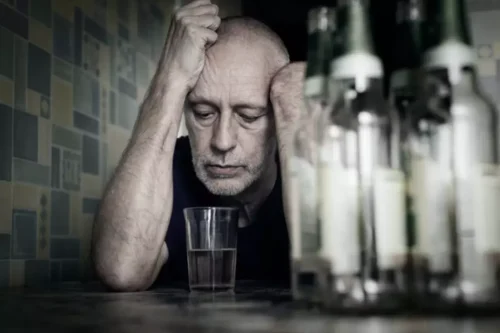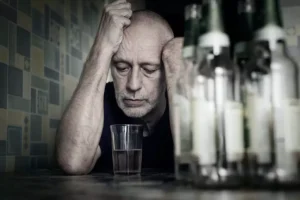Binge Drinking Alcohol: Effects, Risks, & Treatment

Heavy, long-term alcohol use can lead to alcoholic liver disease, which includes inflammation of the liver and cirrhosis. More frequent binge drinking, though, is alcoholism treatment more likely to lead to long-term damage. There’s not a lot of research on how long the physical effects of binge drinking last, or whether your body can recover completely. In addition to increasing the risk of injury, binge drinking impairs the body’s ability to heal from those injuries. For those who drink, hydration, proper nutrition, and moderation can help lessen alcohol’s negative effects on recovery.
The Importance of Sleep in Recovery from Addiction
- According to a 2021 study, approximately 61.4 million people aged 12 and older reported binge drinking in the past month, which accounts for about 21.7% of the population.
- This pioneering bibliometric analysis explores the emerging field of binge drinking research, offering a comprehensive examination of current trends and prominent areas of investigation.
- It’s important to recognize when repeated binge drinking is a sign of alcoholism or alcohol use disorder.
- What starts with one decision to have a drink can end with irreversible damage.
For women, it’s defined as consuming four or more drinks within about two hours. More research shows that even a single episode of binge drinking can have serious effects on all parts of your body, not just your brain. The body needs essential amino acids, vitamins, and minerals to ensure optimal muscle repair.
Risk of Blackouts, Overdose, and Injuries
The high representation of U.S. institutions in binge drinking research, with eight of the top 10 institutions, is likely because most publications come from the USA. Research shows that the potentially dangerous arrhythmia can happen in people who don’t drink on a regular basis but go all out the few times that they do choose to partake. What does chugging several pints of beer at a frat party, downing five margaritas at a resort, and finishing off a bottle of wine over the course of dinner have in common? While the first one might seem to be the most obvious danger, all three pose risks — even if they occur occasionally. Classic binge drinking “cures” such as cold showers, encouraging vomiting, or giving them coffee should be avoided, as each of these can increase risks to the person’s health.
- People may drive recklessly, fall down stairs, start fires, or get hit by cars.
- However, a common research threshold for binge drinking is five or more drinks consumed within two hours for men and four or more drinks consumed for women 9–11.
- It’s essential to seek alcoholism treatment as soon as you recognize that you have an unhealthy relationship with alcohol to avoid the short and long-term dangers of binge drinking, alcohol abuse, and addiction.
- It raises blood pressure, increases the risk of strokes and heart attacks, and weakens memory, cognitive function, and coordination, making daily life harder over time.
- Long-term effects of binge drinking include not just physical ailments but also significant changes to the brain.
- Furthermore, in an aging population already riddled with polypharmacy, there is heightened potential for toxicity during an alcohol binge (Figure 4).
- Research suggests a strong correlation between adolescent binge drinking and the development of AUD later in life.
How Robin Recovery supports individuals with dual diagnoses
Furthermore, of those identified as binge drinkers, around 25% engage in this behavior weekly, with a quarter of those consuming at least eight drinks during a single binge session 2. Warning signs include an increased frequency of binge drinking episodes, drinking alone, experiencing blackouts, or feeling the need to drink to manage stress or emotions. When a man begins to rely on alcohol regularly or finds it difficult to stop once he starts drinking, it may indicate the development of alcohol use disorder.

Our approach includes long-term recovery planning to help individuals regain control of their lives. Whether addressing binge drinking habits or long-term addiction, we provide the tools and support necessary for sustainable change and lasting sobriety. Alcohol Use Disorder (AUD), commonly referred to as alcoholism, is a chronic medical condition characterized by an inability to control alcohol consumption despite negative consequences.
According to 2021 data from the National Institute on Alcohol Abuse and Alcoholism, 21.5 percent of people in the U.S. ages 12 and older reported binge drinking during the past month. The CDC defines a binge-drinking episode as at least four drinks for women or five drinks for men within a two-hour period. This is enough to raise your blood alcohol level to .08, which would result in impaired driving.
Creating supportive environments that promote healthy choices and encourage seeking help can lead to better recovery and management for individuals struggling with alcohol-related issues. To learn more about the implications of alcohol and other substances, consider exploring related topics such as the dangers of cocaine and alcohol and what is rehab therapy?. A successful strategy is to use a combination of screening and brief interventions for heavy drinking. Systematic reviews have shown that this approach effectively reduces self-reported alcohol consumption. Motivational interviewing principles are beneficial for advising individuals who consume excess alcohol.

Although binge drinking and alcohol addiction are distinct, repeated episodes of binge drinking can gradually lead to dependence, making it harder to control drinking. The shift from occasional heavy drinking to alcohol use disorder is often gradual and can be difficult to identify. Excessive alcohol consumption is a widespread issue, but not all drinking behaviors indicate addiction. Binge drinking and alcohol addiction are often confused, yet they have distinct patterns, risks, and long-term effects. Recognizing these differences is crucial for recognizing problematic drinking behaviors and seeking appropriate treatment. Binge drinking also increases the likelihood of unsafe sexual behavior and the risk of sexually transmitted infections and unintentional pregnancy.

Understanding the Biomedical Consequences of Binge Drinking
Men with AUD often experience withdrawal symptoms when not drinking, including irritability, nausea, and even seizures in severe cases. The brain undergoes chemical changes, making it increasingly difficult to function without alcohol. AUD is diagnosed using specific criteria, such as frequent alcohol cravings, failed attempts to cut back, and continued drinking despite health issues. Teens who engage in binge drinking consume 90% of all alcohol consumed by teens.
Prior to 2016, the research focused primarily on social and cultural factors and interventions for binge drinking. However, a post-2016 shift toward “Mechanistic and Animal Model Research for Binge Drinking” was identified, reflecting the current trajectory of research interest. This timely binge drinking effects exploration of research hotspots and emerging trends has the potential to substantially impact the advancement of the field. The insights presented provide a fresh perspective on binge drinking, which could shape future research in areas such as etiology, assessment, diagnosis, prevention, and treatment.

